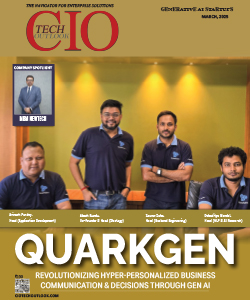Amazon Unveils Robot to Rival Tesla, With Perks for Its Employees
CIOTech Outlook Team
Friday, 09 May, 2025
Tredence, Snowflake Launch AI Tools for Auto Manufacturing, Supply Chain
CIOTech Outlook Team
Thursday, 08 May, 2025
SKF Teams Up with Carnegie Clean Energy to Develop Wave Power Tech
CIOTech Outlook Team
Thursday, 08 May, 2025
ideaForge, Resonia to Partner on Advancing Drone and Robotics Tech
CIOTech Outlook Team
Thursday, 08 May, 2025
Syngenta, Al Dahra Join Forces to Boost Agri-Tech in Four Countries
CIOTech Outlook Team
Thursday, 08 May, 2025
Qatar Smart Education Conference 2025 Set to Redefine the Future of Learning Organized by IBEForuM
CIOTechOutlook Team
Thursday, 08 May, 2025
C-DOT, CSIR-NPL join hands to advance quantum, classical communication tech
CIOTechOutlook Team
Thursday, 08 May, 2025
Hazer, KBR team up to scale up clean hydrogen technology
CIOTech Outlook Team
Wednesday, 07 May, 2025
Lucid, KAUST partner to advance EV tech & autonomous driving systems
CIOTech Outlook Team
Wednesday, 07 May, 2025













